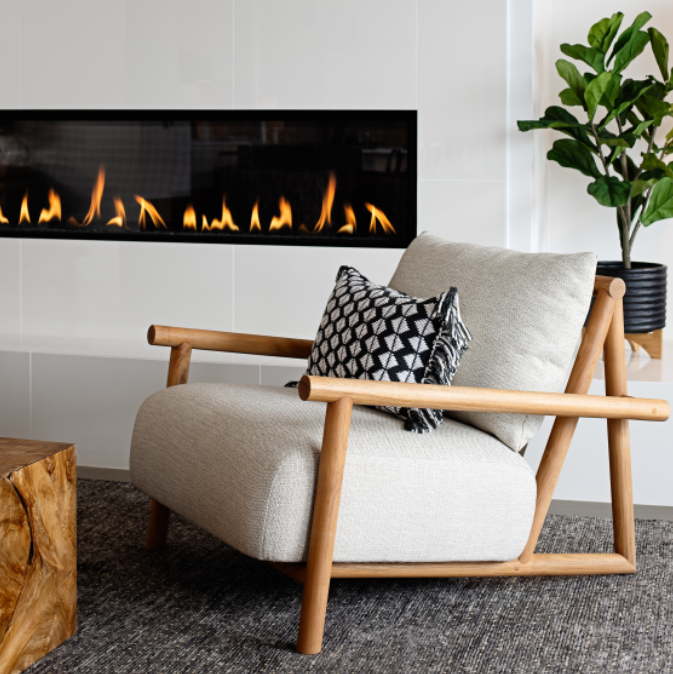Our care guide:
Wood has a presence that few materials can match. It is alive, shaped by sun, soil, and time, and it continues to evolve even after it has been crafted into furniture. The warmth of oak, the golden grain of mango wood, the refinement of veneer, and the quiet endurance of teak all tell their own stories. Caring for them is not just about preserving their beauty. It is about honoring the sustainability and craftsmanship that brought them to life.
Solid Woods: Built to Last, Meant to Age
Solid wood pieces such as oak, walnut, pine, and mango are the heart of traditional craftsmanship. Each carries a unique grain, a depth of color, and subtle variations that make it one of a kind. Solid wood furniture is durable and naturally long-lasting, which in itself makes it sustainable. Well-made pieces can be repaired, refinished, and passed down rather than replaced.
To keep them looking their best, dust often with a soft, dry cloth, and nourish the surface occasionally with a natural oil or wax polish. Avoid harsh cleaners or too much water, as moisture can cause the wood to swell or warp. Keeping furniture out of direct sunlight and away from heating vents helps prevent fading and cracking.
Mango wood deserves special mention. Harvested from trees that have finished bearing fruit, it is one of the most sustainable choices in the wood family, naturally renewable and remarkably beautiful. Its softer texture means it benefits from gentler care. Wipe it dry after cleaning and condition it once or twice a year with beeswax to preserve its soft sheen and rich tone.

Veneer: Light, Efficient, and Refined
Veneer furniture offers the beauty of real wood while using it more efficiently. A thin slice of wood is applied over a stable core like MDF or plywood, reducing waste and conserving natural resources. The result is a smooth, modern look that is lighter and more affordable than solid wood.
Because veneer is more delicate, it thrives on gentle care. Use a slightly damp cloth to clean and dry immediately afterward. Avoid waxy polishes, sprays, or heavy cleaners that can leave residue or dull the finish. With mindful upkeep, veneer pieces can last beautifully for years and show that sustainability and sophistication can coexist.
Beyond its efficiency, veneer also makes use of smaller logs and otherwise overlooked cuts of wood, maximizing each tree that is harvested. It allows for intricate designs and striking patterns without the environmental cost of carving from large solid slabs. When responsibly sourced and properly maintained, veneer furniture becomes an example of how design innovation and environmental care can meet in perfect balance.

Acacia and Teak: Naturally Resilient, Effortlessly Elegant
Acacia and teak are two woods known for their natural strength and enduring beauty. Both are dense and resilient, with rich color variations that bring warmth and sophistication to any space. Acacia’s swirling grain adds movement and depth, while teak’s golden tones and natural oils make it a classic choice for both indoor and outdoor furniture.
From a sustainability perspective, these woods are among the most responsible options. Acacia trees grow quickly and regenerate easily, while teak, when responsibly sourced, provides exceptional longevity that reduces the need for frequent replacement. In both cases, durability and responsible harvesting make them materials built for a lifetime of use.
To care for acacia and teak, dust regularly and clean with a soft, damp cloth followed by a dry one. Every six months or so, apply a light coat of furniture oil or conditioner to protect the surface and enhance the wood’s natural richness. Over time, teak may gently fade to a silvery hue, while acacia deepens in tone. These subtle changes are part of their story, reflecting the quiet beauty of natural materials as they age gracefully.

Reclaimed and Rustic Woods: Stories Etched in Grain
Reclaimed and rustic woods tell a deeper story. Once part of beams, barns, or doors, these materials are given new life in furniture that celebrates age and imperfection.
Small cracks, nail marks, and tonal variations are not flaws but evidence of authenticity. Over time, these signs of age deepen, giving each piece a patina that tells its own story. In a world where so much is made to be replaced, reclaimed wood reminds us that the most beautiful things are often those that have already lived a little.
Caring for reclaimed wood is all about gentleness. Avoid soaking it or using chemical cleaners; a soft, dry cloth is usually enough. Occasionally applying a thin coat of natural wax can help protect it from moisture while keeping its textured charm intact. Its sustainability is undeniable, as no new trees are felled to create it, and every piece is a continuation of something that came before.

Caring for wood is about presence, noticing the way sunlight warms it, how its color deepens with time, and how small marks and changes become part of its story. Each type of wood, whether solid or reclaimed, is a small act of sustainability in itself, a choice to value craftsmanship and longevity over the disposable.
When we care for wood furniture, we are not just maintaining it. We are participating in its life. The polish, the warmth, and the slow evolution of tone are reminders that beauty can endure when treated with care.






Leave a comment
This site is protected by hCaptcha and the hCaptcha Privacy Policy and Terms of Service apply.